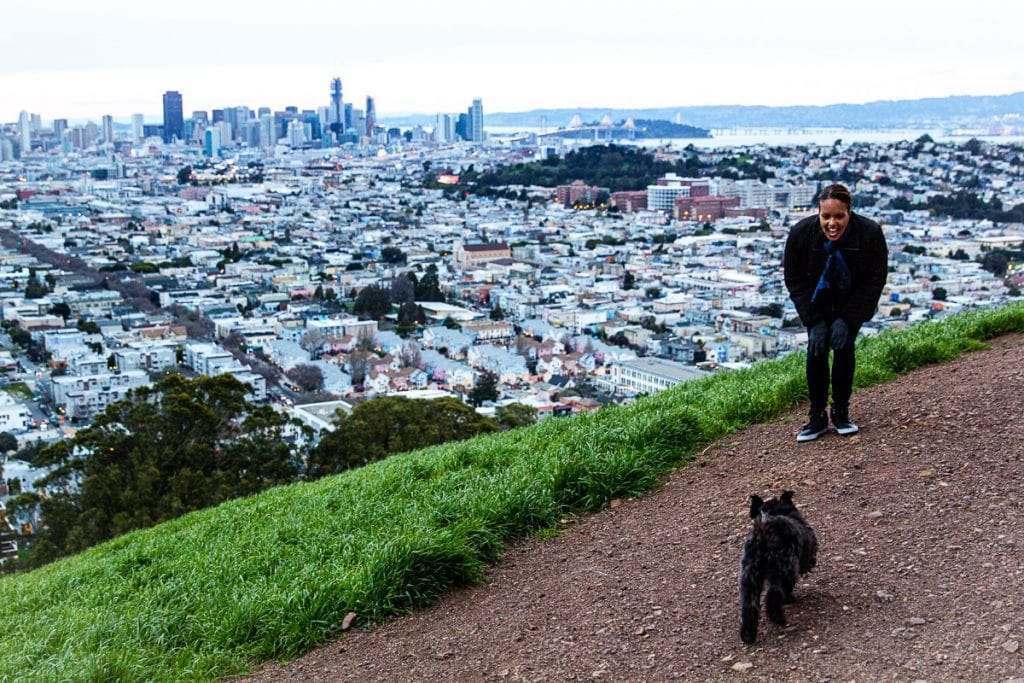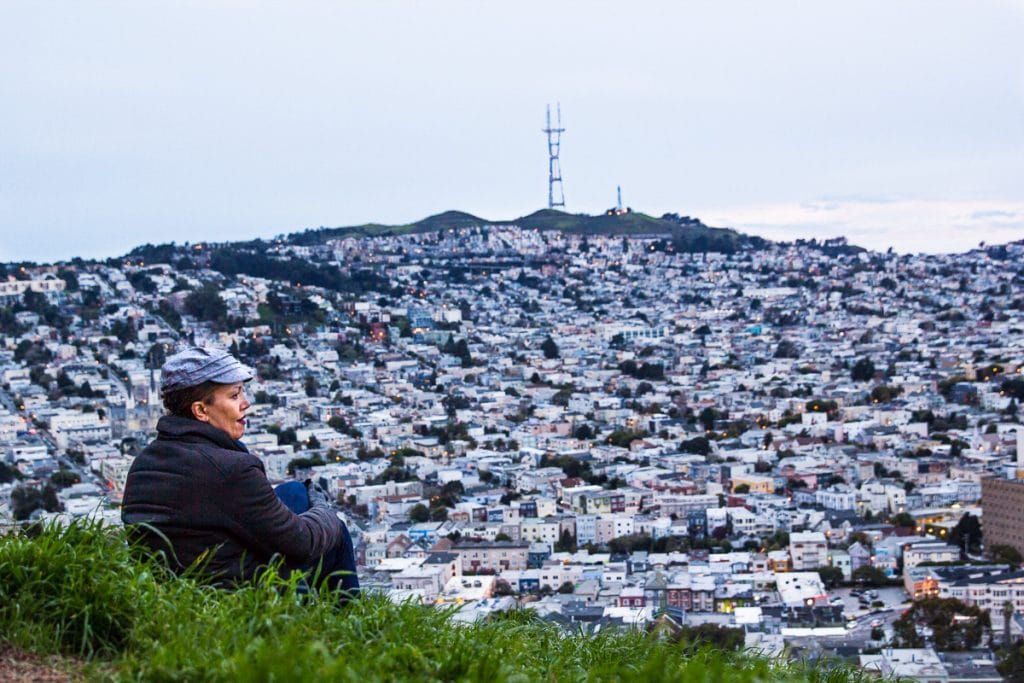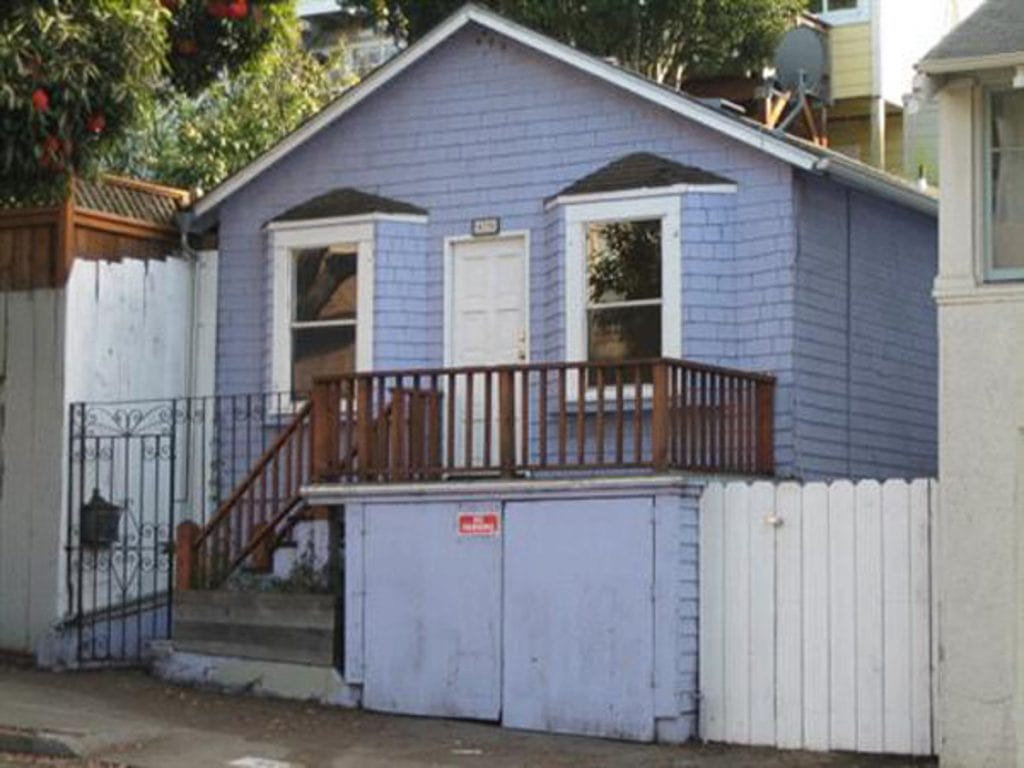
In 1906 when the great California earthquake hit, Bernal Heights survived. Its glorious chert allowed Bernal houses to withstand the shake. There were very few people living around Bernal Hill before then. So there was less there to feed the fire.
As the saying goes, they didn’t name it Bernal “Heights” for nothing. The neighborhood that rises around Bernal Heights Hill is one of San Francisco’s steepest peaks. And often an overlooked sunset view of the city.
Standing on top of Bernal Hill, also called Bernal Heights Summit, you feel on top of the world. The hill has spectacular day views and a stunning city light show at night.
On Bernal Hill there’s a park and a 50-foot tall telecommunications tower that sits on the highest point.
Bernal Hill also boasts a rich and fascinating history. The hill’s geologic makeup actually influenced the way the neighborhood developed.
Like many San Francisco hills, Bernal formed about 150 million years ago. Right after two tectonic plates collided. The Pacific Plate and the North American Plate converged. That’s what caused a “wrinkling” in the earth that created the folded hill.
In the hill near the summit, there are layers of a unique type of hard red bedrock called radiolarian chert. This type of chert is famous for its ability to absorb earthquake energy.
When an earthquake hits, seismic energy travels faster through hard rock than through soft sediment. And the faster the seismic energy travels through the rock, the less shaking it will cause on the surface.

For a Bernalese (Bernal Heights resident), living on earthquake-resistant bedrock has its advantages. They notice less shaking during earthquakes than neighborhoods built on soft sediment. People in neighborhoods like the Financial District or SoMa live on shaky ground.
Some Bernal and Diamond Heights locals didn’t even feel the 1989 earthquake. Structural engineer Rodrigo Santos talked about this in an interview with Mission Local.

48 Cortland Ave/ Earthquake Shack. Photo Courtesy of Bernal History Project
After the 1906 earthquake, temporary housing camps sprang up around the city. Bernal Heights, which was open farmland, grew into a neighborhood for people who lost their homes.
Precita Park was one of those neighborhoods. Relocated residents lived in one-room wooden houses called “earthquake shacks”. They paid low rent and lived by military-style rules about drunken misbehavior.
Once the camps began to close, people found ways to take their shacks with them. Thousands of people moved their earthquake shacks throughout the city. Even today some of the shacks can be found in Bernal Heights.
As the city developed, so did the pastureland on the once sparse hilltop. Houses built for workers popped on Bernal Hill. New shops opened on the new commercial corridor of Cortland Avenue.
Today a few original earthquake shacks are still there. Knowing how to spot them can transport you back in time to the beginning of this eclectic neighborhood.
Link Love:
A Walk in Precita Park for Mind, Body & Spirit

Photo Courtesy of Bernal History Project